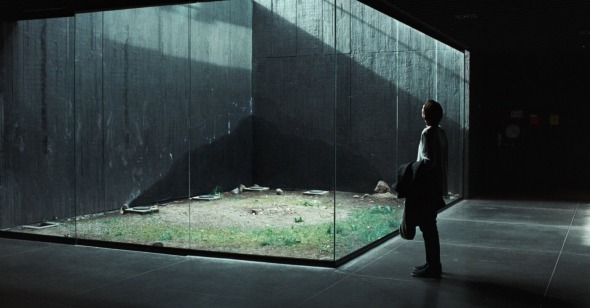So, 2021 wasn’t quite the rejuvenating year we all hoped for. Yet in terms of movies, it nearly did the trick. With impressive, even spectacular films from so many of our greatest living filmmakers (Apichatpong Weerasethakul, Jane Campion, Steven Spielberg, Joanna Hogg) and major arrivals from exciting new voices (Ryusuke Hamaguchi, Radu Jude, Amalia Ulman, Alexandre Koberidze), we feel yanked back from the precipice of doom. At least momentarily.
As always, we determined the ten best films of the year by polling our major contributors from the past year. Please note that in 2020, due to unprecedented shifts in distribution and viewing methods that were partly the results of widespread lockdowns and shuttered spaces, we allowed our participating writers to vote for any festival premieres, even if they had not yet received distribution. As a result, Tsai Ming-liang’s Days placed number one and Cristi Puiu’s Malmkrog at number ten, making them ineligible this year despite official U.S. releases. No matter—it made room for more brilliant films. We have no overarching theme to glean from these titles or trends to spot: many of them were filmed pre-pandemic, so it would be a fool’s errand to read too much into these works as reflections of a moment (save Bad Luck Banging or Loony Porn, which is all too terrifyingly about the here and now). All the better to enjoy them for what they were always intended to be: works by artists who have something to say about loneliness and heartache, connection and love, hypocrisy and evil, joy and elation, and who have miraculously used cinema to express it. No easy task.
[Capsules below written by Juan Barquin, Katherine Connell, Caden Mark Gardner, Eric Hynes, Michael Koresky, Chloe Lizotte, Beatrice Loayza, Mackenzie Lukenbill, Jeff Reichert, and Chris Wisniewski.]
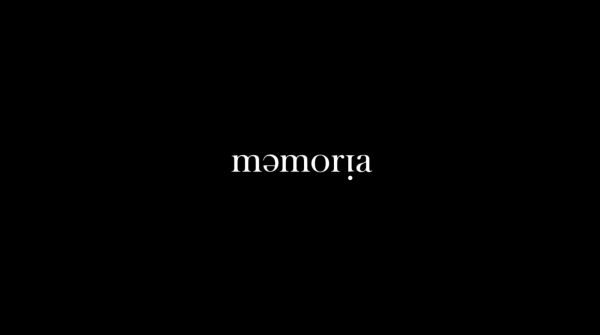
1. Memoria
A dull thud awakens Tilda Swinton’s Jessica from slumber in Bogotá at the beginning of Memoria. This sound, which bears no similarity to any recognizable city noise, seems to stir something deep within her, some kind of recognition. The noise recurs, only to her, at various points throughout the film, and, under the sign of its echo, she begins to investigate its provenance, and, ultimately, to create. In the crucial scene of the film’s first half, she sits with sound designer Hernán Bedoya (played by Juan Pablo Urrego, Hernán shares a name with a famous Colombian land rights activist murdered by the country's largest drug cartel) in his studio and the pair attempt to replicate the noise in her head by manipulating the aural qualities of stock files drawn from a digital archive. In maybe the most truthful scene set in a mixing studio since Modern Romance, their dialogue scans as hilarious—at one point Jessica asks that the audio be made “earthy,” at another more “round”—but within this interaction we can locate the roots of so much: art, criticism, life; the attempt to weave form from the void, order from nothing; the irony that humanity has settled upon unwieldy language as our primary tool from which to make sense of experience; how words always leave so much just out of reach—a feeling any critic of Apichatpong’s consistently slippery work to date has surely and sorely felt. This is a film by an artist peerless at multiplying meanings within his work, so Memoria touches on much more: Colombia’s violent past and present, mortality, existing as a patient of medicine, the practice of translation, the human resonances absorbed by non-human objects. In the film’s later scenes, Apichatpong ventures back into the jungle, a new one for him far from his familiar Thailand, but still a place of limitless possibility. Here, Jessica encounters Hernán’s older self (Elkin Díaz) and the answer to her quest. The two meditate on history and experience and sensation, and somehow, paradoxically, the impossibility of their encounter, its wholly out-of-time quality, grounds the ideas of the film’s first half in an operational metaphysic. This before the movie, literally, lifts from Earth and blasts off into the galaxy. If Apichatpong keeps topping himself at his current pace, it’ll only be a few years until words will fail to scrape at what he’s doing. With Memoria, they are already barely enough. —JR
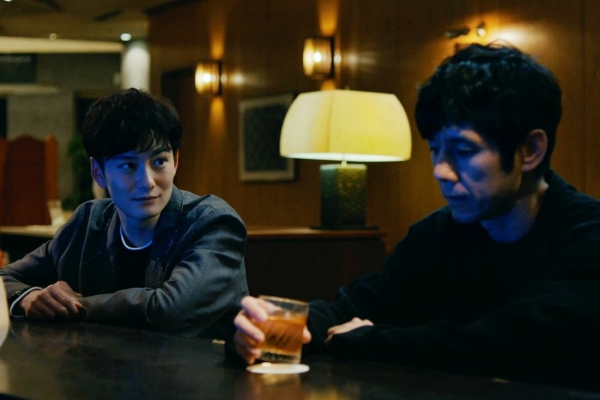
2. Drive My Car
“Chekhov is terrifying. When you say his lines, it drags out the real you,” actor-director Yūsuke Kafuku (Hidetoshi Nishijima) imparts to colleague Kōji Takatsuki (Masaki Okada). Ryusuke Hamaguchi's ascension in world cinema over the past few years has been built on films where characters are often processing a significant turn of events and figuring out how their own art, work, and life have been forever imprinted by massive changes in their ecosystems. However, such changes have not transformed them, but revealed their true selves. Drive My Car is a loose adaptation of Haruki Murakami's short story of the same name, but there’s another adaptation foregrounded within the film: a multilingual international production of Anton Chekhov’s Uncle Vanya, led by Kafuku, haunted by personal loss and his own relationship to the play as a former actor. Drive My Car is filled with unbroken scenes of Chekhov’s words performed by Hamaguchi's dynamic ensemble, and they are enrapturing, to the point of making you feel like you’re no longer simply watching performances. The audience surrogate and witness to these performances is Kafuku’s driver, the laconic and mysterious Misaki Watari (Tōko Miura), whose own past connects her not just to the work itself but also to Kafuku. Such connections in Drive My Car are revelatory, and through the Russian master’s words, Hamaguchi posits that there is something therapeutic in letting the real you out. —CMG
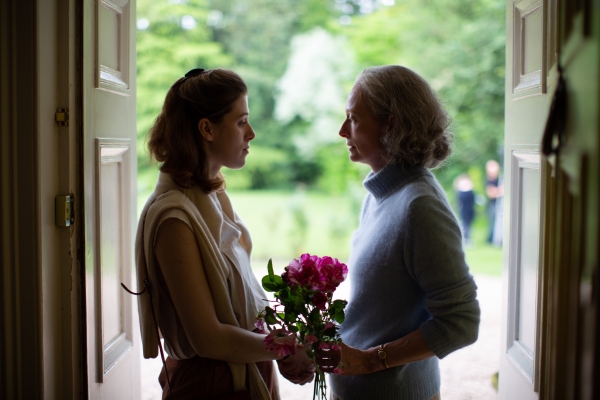
3. The Souvenir Part II
The ineffable alchemy of Joanna Hogg’s The Souvenir Part II is synonymous with the filmmaker’s artistry: she famously works from a detailed written treatment but not a formal script, an element that makes the precise execution of this labyrinthine film-within-a-film-within-a-life even more mysterious and singular. While all of Hogg’s films glimmer with spectrality, this sequel to 2019’s The Souvenir is her most haunted work to date, fringed by moments of surrealism that haven’t been indulged since her student work. This circularity is, of course, part of the point within a meticulously autobiographical film where every set piece and interaction is reconstructed from Hogg’s own youth as a film student in 1980s London. In Part II, we reencounter the filmmaker’s onscreen avatar, Julie (Honor Swinton Byrne), mourning the death of her cryptic boyfriend Anthony (Tom Burke), who died of a heroin overdose at the end of the first film. Whereas The Souvenir established an interplay between artifice and reality circumscribed within Julie’s formative romantic relationship, Part II grafts this dynamic onto Julie’s artistic becoming in film school as she prepares to memorialize this relationship as her thesis project. What’s so moving about Julie’s film—and, by entanglement, Hogg’s—is that both shape art as a messy yet vital vehicle, not to assert genius but express an artist’s humanity. The tether between Hogg and Swinton Byrne is enriched by the fact that Julie’s mother, Rosalind, is played by Swinton Byrne’s own mother, Tilda Swinton, Hogg’s childhood friend and collaborator. Part II punctuates its artistic self-discovery with scenes of this mother-daughter relationship. “I felt through you,” Rosalind tells Julie when asked to consider Anthony’s death—a sentiment that also describes the direct, incredibly vulnerable line between artist and audience that the film opens up. —KC

4. The Power of the Dog
“He’s just a man,” Rose (Kirsten Dunst) says of Phil (Benedict Cumberbatch), the menacing, brilliant, and ultimately pitiable figure at the center of Jane Campion’s The Power of the Dog. True enough, and in that spirit, one could say that Campion’s film is just a Western—another excavation of dysfunctional masculinity and domestic tranquility under siege, dressed up with cowboys, horses, livestock, and sweeping vistas, with a mid-film bull castration for emphasis. But there’s something queer going on here, and I’m not just referring to the shrine Phil keeps to his beloved, long-deceased mentor Bronco Henry out in the barn. In The Power of the Dog, the threats to home and self come not from without but within. This plays out on the surface level, in which the marriage of Phil’s brother, George (Jesse Plemons), to Rose introduces a disruption to their oddly intimate sibling bond, inciting harsh psychological retaliation by Phil that finally implicates Rose’s lanky, paper-flower-making, medical-student son Peter (Kodi Smit-McPhee) in a struggle for control that may, in fact, be one for survival. Beyond that, each of these characters battles against a sense of inadequacy they fear will leave them on the outside when the dust settles: quiet, lonely, overweight George (taunted by his brother as “Fatso”); widow Rose, whose concern about being perceived as a social climber drives her to the comfort of a months-long alcoholic stupor; Peter, with his lisp, awkward gate, quiet intelligence, and ferocious devotion to his mother; and Phil, the Yale man who’s rejected the life of the mind for a mythical ideal embodied by Bronco Henry. On first viewing, The Power of the Dog plays as an odd portrait of four misfits who don’t seem to be built for this world. When revisited, its formal elegance and technical precision, the astonishing economy of its visual storytelling, come more strikingly to the fore. Beautifully made and acted, this queer little movie is shot for shot the work of a master, taut as a hand-spun rope. —CW
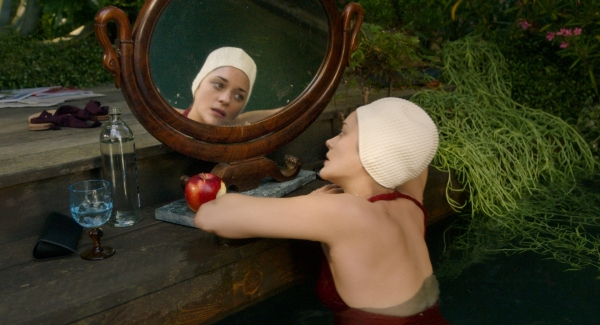
5. Annette
Beyond Annette’s throbbing black heart there’s a light. Realized in collaboration with Ron and Russell Mael of Sparks, Leos Carax’s gutsy musical—his sixth feature and his first since 2012’s Holy Motors—might at first seem willfully estranging. A thoroughly classical fantasy spiked with Sparksian cynicism about a brute and fair maiden fatally entwined, Annette employs kitschy, CGI backdrops, and references to contemporary culture (a #MeToo press conference, viral stardom culminating in a “Hyperbowl” stadium show) to mocking effect. Yet the film’s cheeky opening number, “So May We Start,” immediately folds us viewers into the spectacle, calling attention to the act of surrender at the core of spectatorship as we plunge into an intoxicating mise en abyme of sex, murder, and victimhood. Such dramas of gendered violence so foundational to the history of cinema are cyclical; like Janet Gaynor in Murnau’s Sunrise—or Natalie Wood—Marion Cotillard’s ethereal soprano, Ann, drowns by moonlight. Amid the film’s suffusion of male guilt, the bravado of Adam Driver’s agonizingly tempestuous performance, and the knowingly tragic repetitiousness of it all, Carax finds grace in, of all things, a naggingly unreal little object: baby Annette. The child’s forceful artifice begs the question: is it possible to generate authentic feelings—to be moved—in this age of digitally reupholstered fraudulence, absurdity, and exploitation? To love Annette is to abandon reason, to believe in her as we once believed in fairy tales and in the movies. —BL
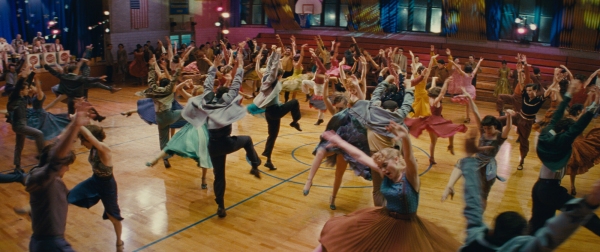
6. West Side Story
For the movie musical lover, a first viewing of Steven Spielberg’s West Side Story might produce a mixture of awestruck appreciation and general frustration: the former for the clear-eyed skill with which the veteran Hollywood craftsman has tackled the genre; the latter for the decades of musical mediocrities (at best) we’ve had to suffer through while he was biding his time. After years of watching the likes of Rob Marshall, Tim Burton, Phyllida Lloyd, and Tom Hooper cast non-dancers and effortfully bad singers, spatially chop up bodies, and generally feed fuel to annoying movie musical detractors, Spielberg shows not only an intuitive, geometrically precise understanding of how to shoot and cut bodies moving in space and how to visually compose duets for prime emotional impact but also a profound internalization of the implicit operatic, melodramatic reason for the genre at all. Dayenu… but Spielberg and screenwriter Tony Kushner (maybe the most rewarding and unexpected partnership of 21st-century Hollywood) go deeper, surgically taking apart, reimagining, and reconstructing a classically problematic text without forgoing any of the pleasure. Yes, in a sense, this is your grandfather’s West Side Story, as it's made once again by white, Jewish, American men (Spielberg and Kushner trading in for Bernstein, Laurents, and Sondheim) who know little to nothing about the communities they depict, particularly the 1950s New York Puerto Rican neighborhoods victimized by disaffected white ne’er-do-wells. In this case, however, we have two artists whose careers have been continually preoccupied with the legacies of genocide, bigotry, and the precarity of American democracy. Equally essential? The interpretations of its astonishing cast, especially firecracker stage transplants Ariana De Bose, David Alvarez, and Mike Faist, and vital newcomer Rachel Zegler, each of whom brings so much deftness and verve that they might as well be considered auteurs here themselves. Spielberg may not be Minnelli or Fosse, but, at 75, he remains the greatest student of what was once Hollywood, and his long-time-coming West Side Story arrives at an ominous and therefore poignant moment for anyone who cares about the history, future, and craft of American filmmaking. —MK
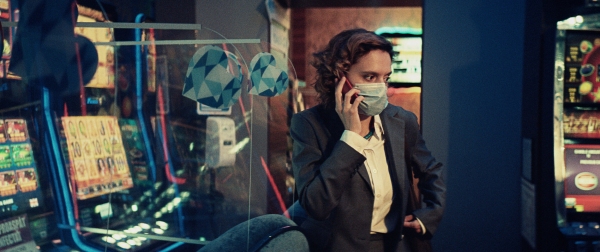
7. Bad Luck Banging or Loony Porn
Bad Luck Banging or Loony Porn is too unwieldy of a title to conjure a single image, but “loony” is certainly the film’s guiding mood. At first, Radu Jude’s new masterwork embarks on a crass, surreal burlesque through Bucharest: as schoolteacher Emi (Katia Pascariu) goes about her errands, we encounter bizarrely hypersexualized yogurt billboards, obscenities yelled across supermarket aisles full of Emoji Movie merchandise, and a man intentionally ramming his car into a pedestrian. Within this hotbed of aggression—which, since Jude filmed in public spaces in the summer of 2020, is aggravated by squabbles over COVID-era masking etiquette—it’s ironic that the reserved Emi has become a pariah at work, under fire from righteous parents after her private, consensual sex tape is leaked online. But Jude’s satire doesn’t simply highlight the hypocrisy of moral conservatism; he crucially punctuates Emi’s puritanical drama with a Godardian middle third, a chronicle of political violence in eastern Europe. In these juxtapositions, Jude diagnoses social outrage as chronic denial. There is a libidinal sense of relief when calling someone a villain, but it’s terrifying to experience everyday life as part of a continuum of historical atrocities. Jude’s dark humor spouts from these horrors, although catharsis isn’t the goal; that would be, well, loony. When Jude quotes Siegfried Kracauer’s description of cinema as “Athena’s polished shield”—allowing us a unique vantage point on these harsher truths—he reminds us how many other filmmakers desperately need to stock up on Windex. —CL
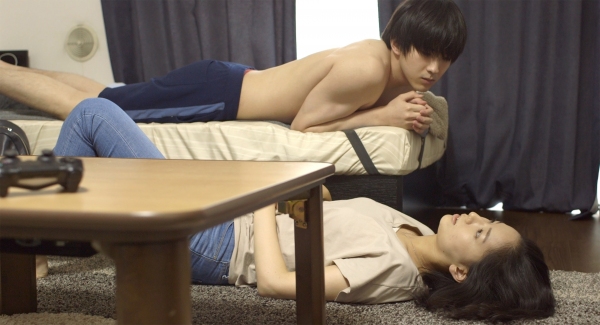
8. Wheel of Fortune and Fantasy
While Ryusuke Hamaguchi’s Drive My Car has been the talk of the town for its length and ambition, and for the way it reimagines Haruki Murakami’s short story for film, his other release this year is a treasure of its own. Wheel of Fortune and Fantasy is comprised of three short stories written by Hamaguchi himself, each one intimately exploring the fraught relationships among a small cast of memorable characters. It’s as close to a slice-of-life anime turned live-action as one gets, with scenes playing out rather casually and each surprising pair indulging in long personal conversations that make way for engaging conflict and sincere growth. Whether it’s a reading of a chapter from an erotic novel in a public space or chronicling a chance meeting between two people who might or might not know each other from high school, Hamaguchi’s film shows that even the smallest incident can have great meaning. What matters most is that these people find the words to properly convey their conflicted emotions during their brief encounters, even if they think it’s too late to change. —JB
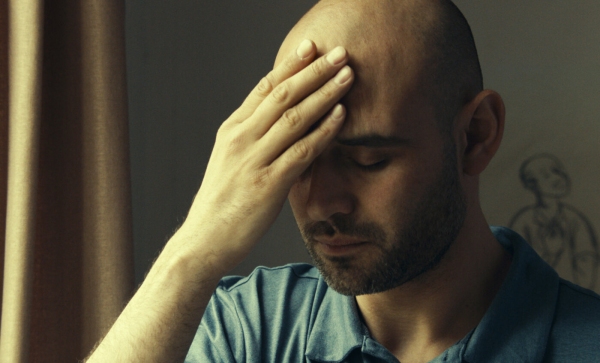
9. What Do We See When We Look at the Sky?
It’s difficult to describe Alexandre Koberidze’s second feature without giving the wrong impression. Thematically, the film has elements of romance, magical realism, and slice-of-life portraiture, but whatever those terms evoke doesn’t necessarily register on screen. Similarly, adjectives that might come to mind—entrancing, offbeat, ambling, or (heaven forfend) quirky—smack of strain, reducing something expansive. Yes, there’s a sort of meet-cute between two young townspeople, and there’s a magical spell that transforms them into unrecognizable alternate versions of themselves, but that’s just the first 20 minutes, and not especially indicative of what’s to follow. The film consistently considers, honors, toys with, and fashions connections among its chosen and inherent domains: its setting, the relaxed, river-blessed, prepossessed Georgian city of Kutaisi; its framed and edited images, cascading confidently among stationary snapshots of rooms, objects, town squares, faces recalled and glanced; and the viewing space itself, in which we’re allowed to contemplate our moment-by-moment relationship to all these elements. The casual philosophical query of the title is a sincere one, evoking an emerging artistic process that’s ruminative, non-declarative, and communal. Of course, it’s hard to describe: there was nothing remotely like it in 2021—or any other year.—EH
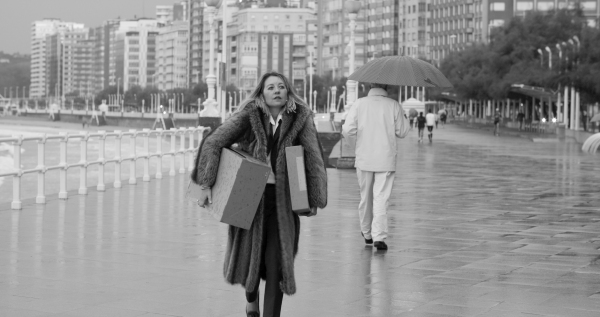
10. El Planeta
I’ve noticed many Sundance reviews of Amalia Ulman’s debut feature El Planeta refer to Leo (played by Ulman) and her mother, María (played by the director’s mother, Alé Ulman), as insufferable. I disagree. In our current condition there is little more immediately endearing to me than the unambitious charlatan, accumulating small luxuries as an end unto itself: style-as-sustenance in an unfeeling public sphere. Leo and María live a Big-and-Little-Edie existence—though with wounded egos and better taste—in a tiny apartment in Gijón, Spain, amidst rows of shuttered shops and empty streets. Once a stately port city, Gijón has been left to fend for itself during Spain’s unemployment crisis. María knows she is on borrowed time—she has stopped paying electricity bills and shoplifts with increasing recklessness. Leo scurries about town, hoping to hoard enough money for a plane ticket to New York and a book she wants that isn’t in the library. El Planeta comfortably chronicles its characters’ failures, transitioning between black-and-white scenes with dissonant, zany wipes. As in her online and multimedia performance work, Ulman imbues and dissects every surface and object (shoes, jackets, cat photos, restaurant orders) for meaning in their relation to class and image. El Planeta is about the challenges of continuing to look your best while the failed state smolders. —ML
